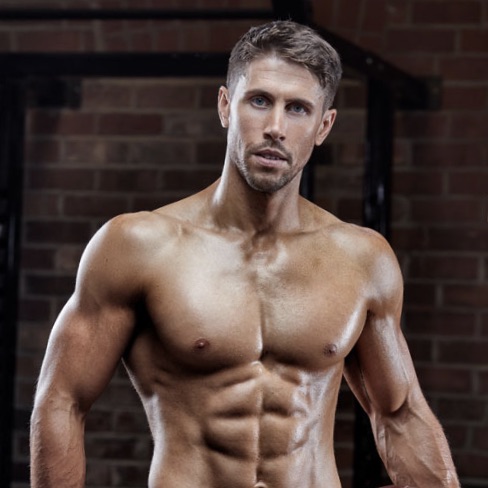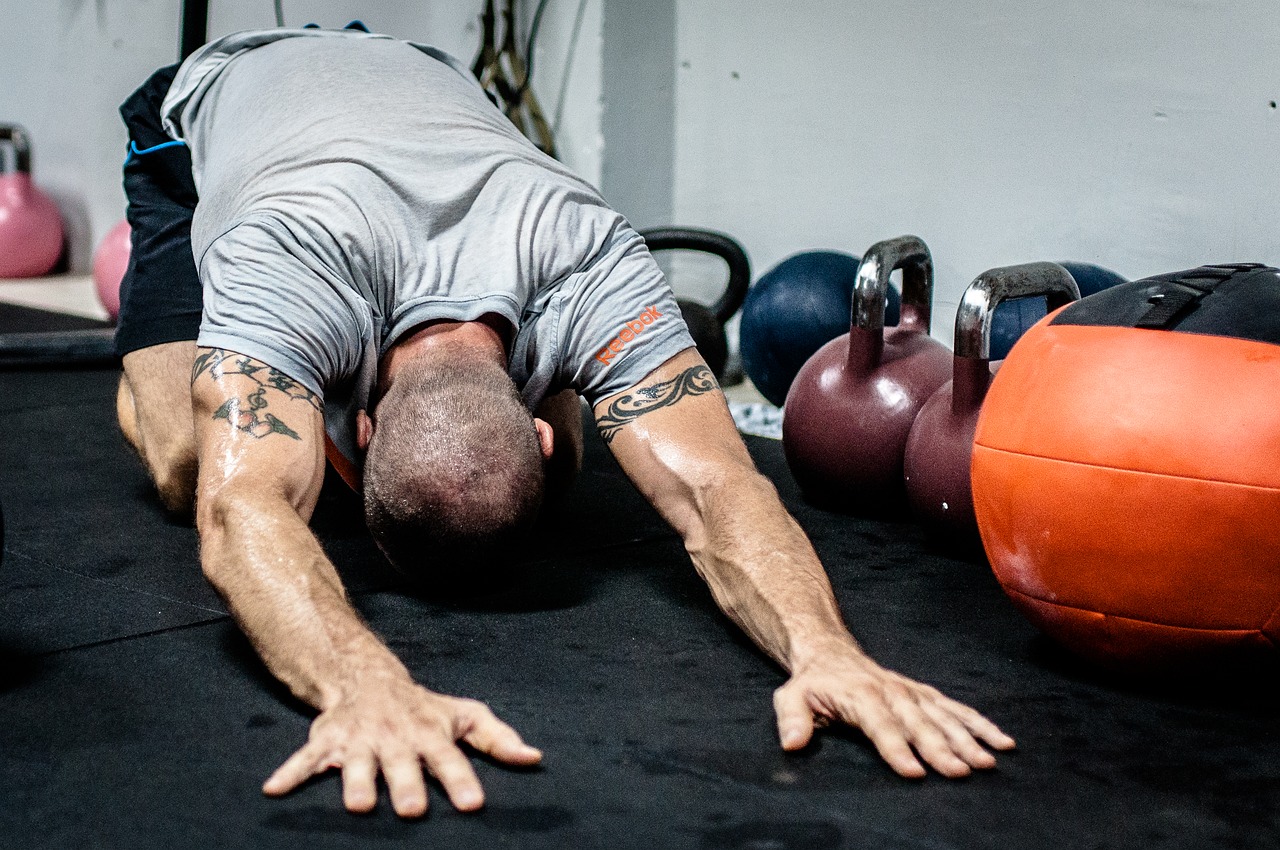Delayed-Onset Muscle Soreness or D.O.M.S is that feeling that most of us have experienced usually 24-48 hours after a hard workout, and usually lasts for up to 96 hours.
It’s that feeling of pain, tenderness, and stiffness that some of us love whilst others loathe. For some it gives us the feeling of accomplishment, a gentle reminder we did something that was good for use. but for others a pure hindrance and the reason why getting out of bed is a struggle.
The severity of the soreness that we experience is as a result of a number of factors, including familiarity with an exercise, the intensity, amount of eccentric loading, how much a muscle has been stretched under resistance, and the angle of muscle contraction.

We just don’t know!
We know what types of exercise can cause D.O.M.S, and often just through personal experimentation we know how to get sore. However the underlying mechanisms behind post-exercise soreness is are somewhat of a mystery.
Although research has come up with a number, or combination of mechanisms responsible, no one clear explanation is actually available.
To date, mechanical damage of the muscle tissue, inflammation and swelling, and increase in free radical production have all been suggested to contribute to the symptoms associated with D.O.M.S.
D.O.M.S & Mechanical Damage
The response to localised muscle damage is one that can be compared to a muscular injury and the inflammatory response to an infection.
A large rate of tissue breakdown occurs during exercise when working at greater intensities, and closer to the maximum weight you can lift (i.e., the higher the percentage of maximal weight you lift the greater the rate of mechanical damage).
Also emphasising the eccentric component of an exercise can contribute. For example performing a loaded stretch of the muscle, or overloading the eccentric phase with more time under tension or weight.
These can all form high amounts of mechanical tension and tissue breakdown.
Types of tension
✓ When muscles passively stretch (stretching a muscle without actively tensing it) this is what’s referred to as passive elastic tension.
✓ On the other hand if you place tension on a muscle by isometrically (statically) flexing it as hard as possible, this is what’s referred to as active tension.
During both types of stretch high amounts of mechanical tension are formed. Taking a muscle through its full range of motion and lengthening, or “stretching” it whilst also using resistance has been shown to produce a large amount of mechanical damage.
For example stretching the pectoral muscles fully during dumbbell flyes, and performing what has sometimes been referred to as a “loaded stretch”, has been shown to trigger large amounts of post-exercise soreness.
High amounts of mechanical tension are produced during these type of actions, as high eccentric force is being produced by the muscle in a lengthened state.
Inflammation, Swelling and Free Radicals
Certain forms of exercise, including eccentric exercise in particular can result in injury to the muscle cell membrane. This sets off an inflammatory response that leads to prostaglandin and leukotriene production.
Leukotrienes are responsible for controling the inflammation process and prostaglandins (specifically PGE2) directly causes the pain sensation associated with D.O.M.S by making certain pain receptors more sensitive to the effects of various chemical messengers.
These Leukotrienes also increase vascular permeability and attract neutrophils to the area of damage. In Layman’s terms this means that molecules can pass through capillaries easier and a build-up of white blood cells occur.
Neutrophils generate free radicals which can also increase damage to the cell membrane.
Swelling results from the movement of cells and fluid from the bloodstream in to the spaces between the muscle tissues with inflammation, and can contribute to the sensation of pain.

Is D.O.M.S Good or Bad?
In short, feeling D.O.M.S doesn’t necessarily mean that you’ve had a good workout. It’s more of a sign of the type of workout you’ve had, how unaccustomed to the workout you could have been or the types of exercises you were using.
You’ll also find that the more experienced you are in the gym, or in your sport, the less muscle soreness you’ll experience over time as your body becomes more accustomed to the exercise.
To play devil’s advocate however, the types of exercise D.O.M.S can be associated with, and in particular producing large amounts of mechanical damage, can lead to greater increases in muscle size.
Therefore a feeling of post-exercise soreness may be expected in sessions aimed at maximum muscle growth .
Cell swelling and inflammation associated with D.O.M.S can also be of use in small doses, so any strategy you use to reduce these (i.e., use of anti-inflammatory drugs, treatment with ice or compression) should be carefully considered not to be overdone.
The acute inflammatory response to exercise is actually something you should try not to interfere with too much, that is unless recovery for say a competition the next day is a priority.
Even use of antioxidants such as vitamin C should not be consumed around workout times for the above reasons. Save stuff like this until at least an hour or two afterwards.
D.O.M.S is absolutely normal, so man up!
Supplements to Help D.O.M.S
As we’ve already said, it’s probably not smart to try an effect some of the acute response to exercise too much. One thing we can and should do though is kickstart the recovery process after a workout. Later on in the day we can focus on some other strategies too.
Immediately post-workout prioritise allowing muscle tissue to optimally recover from mechanical damage, tissue breakdown and some metabolic stress. A goof post-workout shake can give you the edge here.
In the hours later, and throughout the day prioritise controlling inflammation and swelling and reducing free radicals.
A good nutrition plan with adequate vitamins, minerals and antioxidants should be all you need, but some light aerobic exercise, stretching, yoga, and supplementation can help add to this.
In order to help muscle tissue recover from a training session a number of nutritional supplements could be suggested. The main goal here would be to increase muscle protein synthesis post-exercise, and limit protein degradation.
Top 3 Recommended Supplements:
1) Protein
Consume an adequate amount of protein or amino acids both 30 minutes prior to training, and immediately after.
The most convenient way to do this would be in the form of a protein shake consisting of a fast acting protein such as whey protein or an even more efficient hydrolysed whey.
2) Maltodextrin, dextrose or palatinose
On top of this depending on whether carbohydrates fit in to your current nutritional plan, a little fast acting carbohydrate, such as 30-60g of dextrose or maltodextrin will aid in muscle recovery too.
The best and cheapest option is to buy an unflavoured powder and mix in to your whey when you need it.
3) Branch Chain Amino Acids (BCAA’s)
BCAA’s aren’t a miracle supplement and won’t reduce D.O.M.S, but it is another way to kickstart the recovery process, aid in central fatigue, as well as promote muscle adaptation.
Consume as a pre-workout, in the first half or your workout, or throughout the day. Look for products with 2.5g of leucine per serving or more.
Controlling inflammation, swelling and reducing free radicals, however, is a much harder task to achieve. Due to the relationship between inflammation and free radicals and the mechanisms involved, various anti-oxidants have been suggested to help aid in the process and reduce the severity of D.O.M.S.
The most researched of these anti-oxidants include vitamins C and E. Studies in this area have produced inconsistent results, however 400iu up to 1000iu of vitamin E and 3g of vitamin C per day seem to be the most effective for reducing post-exercise soreness. These should be used outside of the post-exercise window though.
Finally, another anti-oxidant that has gained some attention in recent years is green tea extract (egcg). Because of the numerous benefits of green tea, it may be effective at slowing down the oxidative stress process that is usually brought about through post-exercise soreness.
Additional add-on supplements include:
✓ Arnica
✓ Ubiquinone (coenzyme-Q)
✓ L-carnitine.
These supplements have all been shown to have some benefit when it comes to reducing post-exercise soreness, although there is very little research that’s been done on this area.
From real-world feedback arnica gel has also been suggested to be effective at reducing D.O.M.S when applied directly on to the area afterwards, but as previously mentioned there is very little research around this area.
With all of these supplements listed above the best advice may be to experiment and see what works for you. A good place to start would be to consider using protein shakes and/or BCAA’s around your workout, alongside vitamins C and E taken throughout the day.

D.O.M.S | FAQ’s
Does D.O.M.S affect performance?
Performance should not be affected by feelings of soreness, and feeling sore is not necessarily a sign that your body has not fully recovered. D.O.M.S can only affect performance (e.g., how much weight you can lift, how fast you can run etc.) through more psychological reasons, as feelings of soreness can often be uncomfortable. There are no physiological reasons however.
Can I train when I’m sore?
Yes, providing you feel as though your body has recovered and your performance won’t be hindered.
Is feeling D.O.M.S the sign of a good workout?
Absolutely not, it’s only a sign that you may have done something new, your workout may have involved a lot of eccentric lifting, or you yourself are fairly new to exercise.
How long should D.O.M.S usually last?
Usually for around 96 hours, but it’s not uncommon for it to last longer.
What exercises typically produce the most soreness?
Exercises that emphasise stretching the muscle under contraction (such as chest flyes, deep squats, and stiff-legged deadlifts), exercises that emphasise or overload the eccentric/downward portion of a lift, and any exercise you may not be accustomed to.
What does it mean if I never feel sore after a workout?
This could be from a number of reasons, but as previously mentioned isn’t a sign that you have not worked hard enough in your workout. The more experienced you are and better your recovery capacity, the less you’ll tend to feel it.

I build Olympians, Cover Models and those who want to look like them. Author or “Ultimate Abs” available in all good book stores.
